The globe is dotted with villages and cities built in unlikely places, but some take their unusual locations and environments to an entirely new level. From underground dwellings to communities tucked into cliffside precipices and even one built on the rim of a volcano, these 16 cities and towns are some of the most uniquely located communities in the world.
Yanjin, China

Considered by many to be the world’s narrowest city, Yanjin hugs the Nanxi River as it runs through the steep mountains of northwest China. When viewed from above — a winding river sandwiched between a slim row of tall, narrow buildings — this city in the Yunnan province doesn’t seem real. The widest sections of the city measure less than 1,000 feet across, and at its narrowest point, Yanjin is less than 100 feet wide. There is one main road on each side, running parallel to the river, and fewer bridges than you might expect. And since many of the buildings in town are located right on the banks of the river, to protect from flooding, the city’s buildings are built atop concrete pillars.
The mountains surrounding the city have kept it isolated and prevented much tourism or development, but despite that more than 450,000 call Yanjin home today. Though it’s difficult to reach, recent viral drone footage has boosted its popularity with tourists, too.
Rocamadour, France
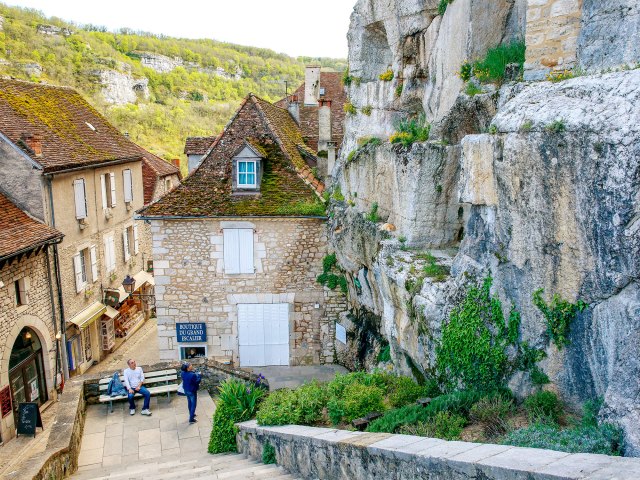
Rocamadour, a tiny, medieval village built along and above a gorge on the Alzou River in southwestern France, rises in stages and platforms up the side of a cliff. The lower portion of town is home to its only street, Rue de la Couronnerie. The lane is lively with shops and well-maintained homes built between the 13th and 17th centuries. From there, a monumental staircase of 233 steps rises to a group of churches and shrines officially recognized as a UNESCO World Heritage Site and offering some of the best views in the town.
Once nearly deserted after the French Revolution, Rocamadour buzzes with tourists and those making the religious pilgrimage up the stairs to St. Amadour, the town’s namesake church. Legend has it the saint witnessed the deaths of St. Peter and St. Paul in Rome before settling in the tiny French village to live out his life in solitude. The famous Black Madonna — the iconic, holy statue — also resides in the spectacular, cliff-sheltered Notre-Dame Chapel.
Ronda, Spain
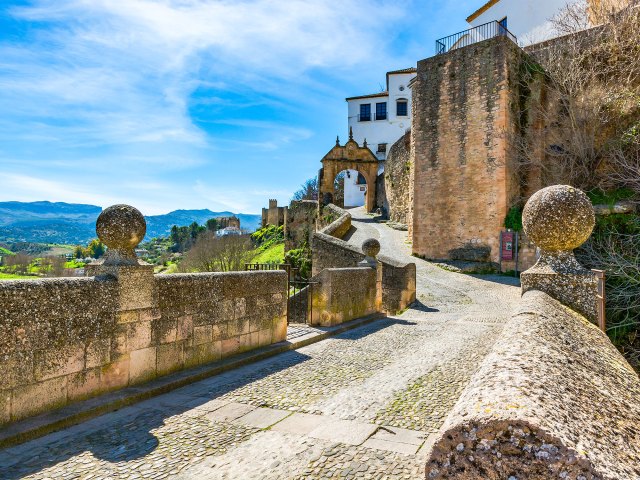
Ronda, an Andalusian city in southern Spain with 35,000 residents, is the home of modern bullfighting. It was here, in the 18th century, that bullfighters got off their horses and began facing their bull opponents on foot for the first time. But, more than bullfighting, Ronda is famous for El Tajo Gorge — a dramatic, 328-foot-tall crevasse that divides the town in half. To get around the gorge, the town features a series of picturesque bridges and walkways.
From the oldest part of town, a scenic path leads visitors to the very bottom of El Tajo and the beautiful Puente Nuevo (New Bridge), which dates back to 1793. The surrounding landscape is rugged, which meant constructing the span was dangerous — a feat evident from the balconies jutting out from the sides of the gorge. Two smaller bridges also cross the gorge: the Puente Viejo (Old Bridge) completed in 1616 and the Puente Romano, a span dating to the Moorish period.
Ganvie, Benin
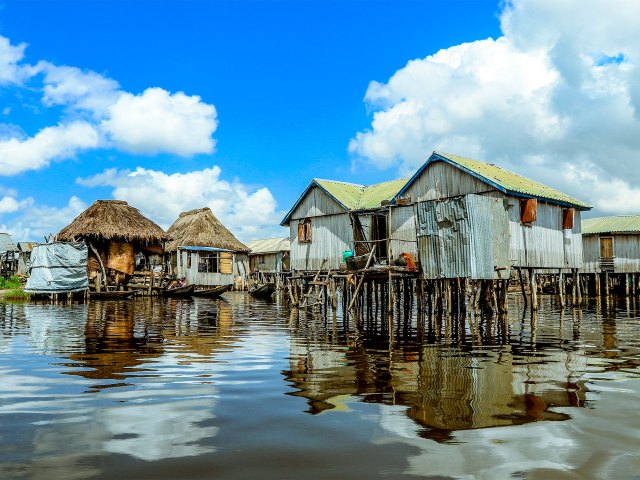
Ganvie, located in the Republic of Benin on the Gulf of Guinea in West Africa, has been called the “Venice of Africa.” And for good reason: The city’s structures stand on stilts above water and its 30,000 residents navigate around town in canoes. But instead of canals, Ganvie has the lagoons of Lake Nokoue — a large body of water north of Benin’s largest city, Cotonou.
Interestingly, the city originated as a safe space for the Tofinu tribe back in the 17th century. The group was fleeing another tribe, the Fon, whose religious beliefs prevented fighting on the lake, which they considered sacred. Today, the city is officially recognized as a UNESCO World Heritage Site and is dotted with bamboo huts and pens built from reeds where residents raise fish. The city’s one patch of dry land features a school and a soccer field; another is being built as a city cemetery.
Coober Pedy, Australia
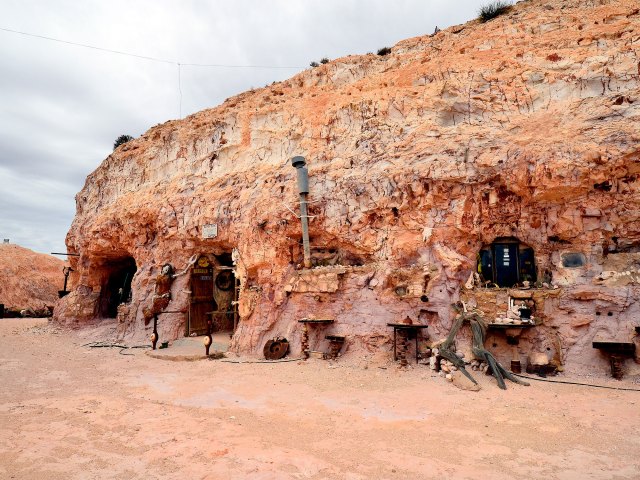
It’s hot in Coober Pedy — very hot. Located in the Australian Outback, this town’s temperatures typically soar into triple digits. There are few trees, and very little grass. The landscape is otherworldly and almost bleak — dusty, with crags of reddish-brown sandstone. The views are a bit apocalyptic and, perhaps, a bit familiar — Coober Pedy was the backdrop of the 1985 dystopian action film Mad Max Beyond Thunderdome starring Tina Turner and Mel Gibson.
You might wonder how anyone could live in such a desolate town with an extreme climate. Well, it’s because this small village — home to only 3,500 residents — happens to be the “Opal Capital of the World.” About 70% of the world’s opals come from Coober Pedy. And the folks who hunt for the precious stones have adapted: they live underground. It’s cooler down there, and all those miners were digging holes anyway. About half of the town’s residents live in underground dugouts where temperatures stay closer to 75 degrees Fahrenheit. In addition to residences, the town is also home to underground museums, churches, shops, and even hotels.
Monemvasia, Greece
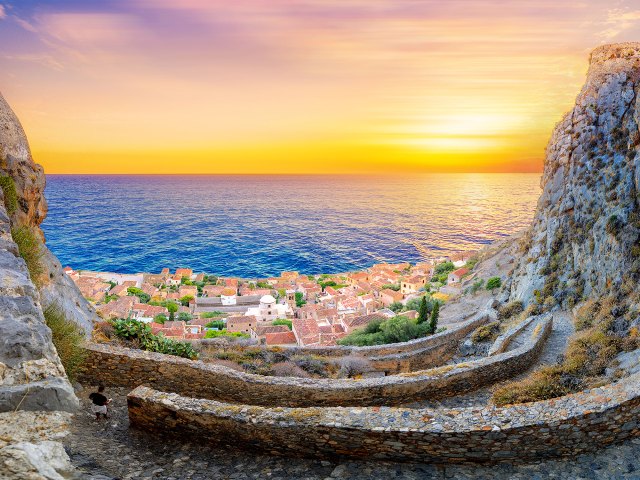
Tiny Monemvasia is a mostly-seasonal settlement concealed behind a huge rock face in the region of Laconia in Greece. To get to this enchanting village, you must travel to the town of Gefyra, park your car (since there’s no driving in Monemvasia — only narrow, cobblestone walking paths), and cross a small footbridge. This rocky outcropping was once attached to the mainland but an ancient earthquake made it an island.
Nearly every building in this enchanting walled village is made of stone and stucco painted in earth tones with red-tiled roofs. These structures date from the Byzantine, Venetian, or Ottoman eras. Most of these beautiful buildings are vacation homes, guesthouses, and cafés — and few people live here year-round. At the end of the main drag, a path leads outside the fortress walls to a lighthouse with incredible views of the Myrtoan Sea. In town, you can visit one of two historic churches; the Church of Elkomenos Christos dates back to the sixth or seventh centuries. Its simple yet elegant façade belies the ornate and massive icon of the Crucifixion within. After that, be sure to sample the region’s renowned wines and olive oils.
Setenil de las Bodegas, Spain
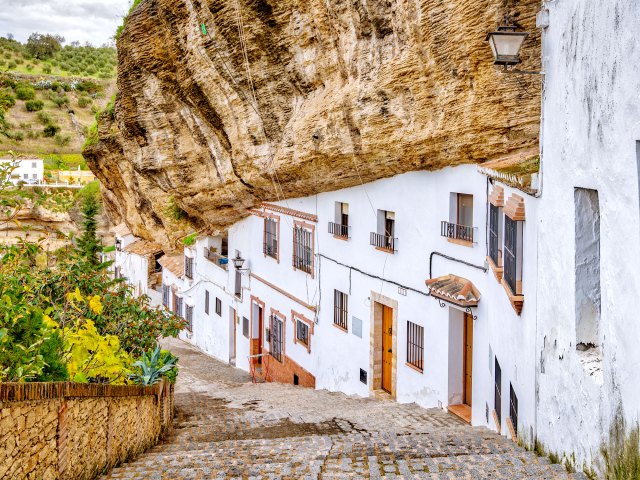
It’s safe to say that those who reside in this town of about 3,000 people in southern Spain are living under a rock. The stunning buildings of Setenil de las Bodegas are built under and up against huge cliffs of basalt rock. But the town’s unlikely location also serves a practical purpose — the cliffs provide protection from both invaders and the elements. It’s also simpler to build a façade that backs up to climate-controlled rock than it is to build a full house. Because of these factors, historians believe the spot has been settled since prehistoric times and the preexisting nooks and crannies were even used to extend the life of fresh produce. These cliffs still keep residents warm in the winter and shade them from the heat in the summer.
Historically, Sentenil de las Bodegas was a Moorish stronghold, one of the last Muslim territories on the Iberian Peninsula in medieval times. You get a sense of that history as you walk along the town’s oldest thoroughfare — Calle Herreria. Charming stucco and stone buildings line the curving corridor, melding into a sheer, sweeping rock backdrop and ceiling. You will literally see stone rather than sky in some places — how’s that for a surreal atmosphere?
Bonifacio, Corsica
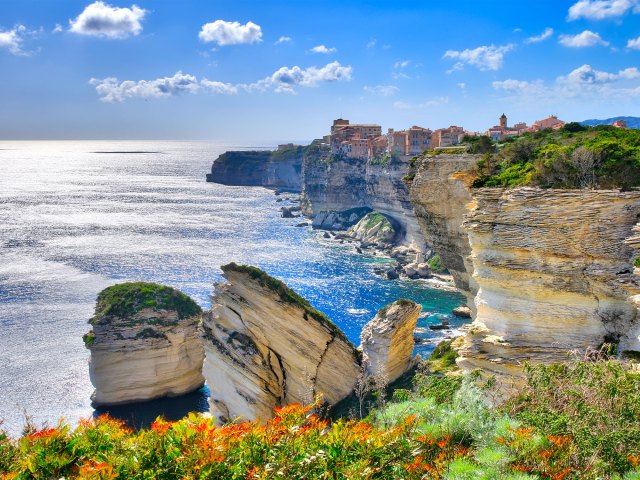
Located on the southern coast of Corsica, the town of Bonifacio is perched along 230-foot-tall limestone cliffs overlooking the Mediterranean Sea. The village’s precarious location and stunning views have earned the medieval town and its fortifications a few nicknames — “Mediterranean’s Sentinel” and “Citadel of Cliffs” among them. The spot is a tourist’s dream — boasting perfect weather year-round and featuring charming, red-roofed buildings and cobblestone lanes and a sparkling shoreline with turquoise waters. Even at the height of summer, you won’t find the village crowded, and there’s plenty of history on every street corner. As Corsica’s oldest settlement, Bonifacio is home to numerous monasteries, museums, and churches offering tours.
Corsica, a French island, is separated from the Italian island of Sardinia by the Strait of Bonifacio — named for the idyllic town. Interestingly, the two islands were once converged but volcanic activity caused the land to rift. Over centuries, the water flowing through the strait has carved into the cliffsides, putting the town on the lip of a dramatic precipice. The unforgettable view of this magical spot from the sea creates an illusion of a gleaming city suspended over the churning sea below.
Civita di Bagnoregio, Italy
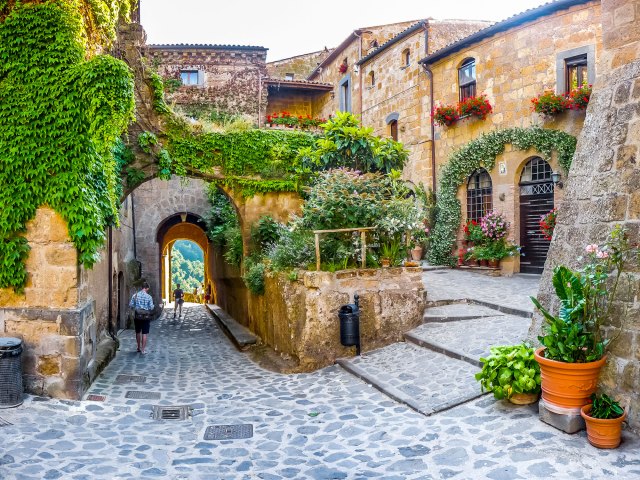
Perched on a fragile and erosion-prone cliff is Civita di Bagnoregio — the first Etruscan settlement founded over 2,500 years ago. Today, this hamlet located in the Tiber River Valley in central Italy is home to only about 12 people (and 20 or so cats). This tiny village welcomes tourists to experience a walled, medieval town dangling from a slim volcanic plateau. The nearest neighboring municipality, a town called Bagnoregio, is a canyon away. To get from Bagnoregio to Civita di Bagnoregio, visitors must cross a steep pedestrian bridge cantilevered 1,200 feet above the gorge that winds up the village’s stone walls.
The population of this historic village dwindled for a number of reasons, but mostly because of the town’s remote location, which is two hours north of Rome in the badlands of sand and sedimentary tufa rock. Many residents moved over to the larger town of Bagnoregio over the centuries — especially after an 18th-century earthquake created the canyon dividing the two settlements. The bridge between the two towns was destroyed in World War II, and it wasn’t rebuilt until the 1960s — a situation that left the few remaining residents living in extreme poverty. Tourism (and a small fee to cross that epic bridge) has started to bring life back to the tiny town — there are now a few bed and breakfasts, restaurants, and souvenir shops lining the fairytale-like stone alleys and stairwells.
Matmata, Tunisia

The small Berber village of Matmata, located in southern Tunisia, features a series of semi-underground dwellings. These homes are configured around deep, circular pits in the native sandstone — a rock that tends to be soft enough to carve into even with hand tools. From there, additional caves, or “rooms,” are created around the central courtyard pit. The purpose of this construction is to protect residents from the extreme desert heat. In the 1970s, more traditional, above-ground construction hit the area, but many locals still preferred their subterranean dwellings hidden among the area’s olive and palm trees.
It’s unclear when nomadic tribes first settled in the area. The town was virtually unknown until a flood in the 1960s brought the settlement and its underground homes to the attention of the Tunisian government. That said, these homes and the arid, craggy landscape typical in the Djebel Dahar mountains of southern Tunisia might seem familiar. They were featured prominently in Star Wars; an inn called the Hotel Sidi Driss was used as the otherworldly backdrop of Luke Skywalker’s family home.
Monsanto, Portugal
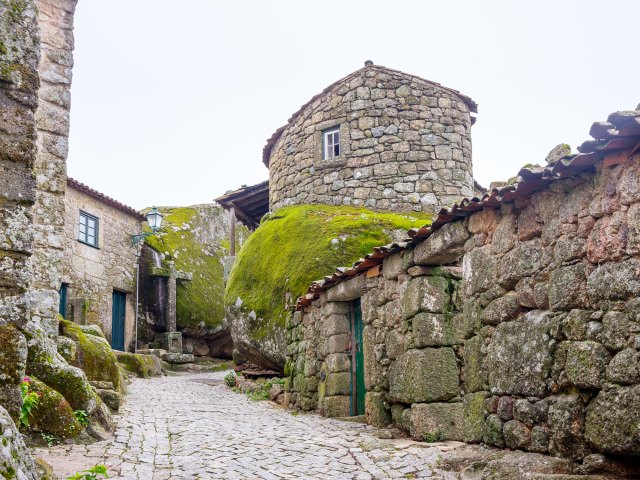
Monsanto was dubbed the “most Portuguese town in Portugal” back in 1938. But that might be a bit of a misnomer — few towns in Portugal, or anywhere, are so defined by their unusual landscape. Centrally located in the countryside, Monsanto is perched at the crest of a 400-foot-tall hill famous for its massive granite boulders and outcroppings. The rocks are so prevalent that the village is built right into them — homes and buildings use the massive stone slabs as walls and even roofs. Some homes are carved right into the boulders; keep your eyes peeled for huge granite mounds featuring windows and front doors.
The town’s unique construction has a storybook effect, with the village featuring moss-covered stone, red-tiled roofs, and narrow, cobblestone lanes curving up the remains of a castle. Dating back to medieval times, the castle and the village below have sweeping views in all directions. That visibility made Monsanto and the Templar Castle a strategic defensive stronghold throughout prehistoric times — famously withstanding the Napoleonic invasion. Today, the village has been designated a living museum by the Portuguese government, which means this spot looks a lot like it has for centuries and will remain that way.
Jezzine, Lebanon
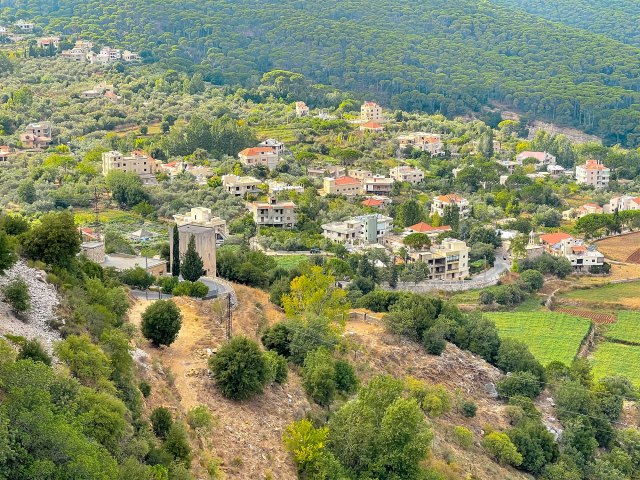
About 25 miles south of Beirut, among pine forests and vineyards, is the resort town of Jezzine. Dangling from a rocky promontory and overlooking a lush valley, the town hugs a 240-foot-tall waterfall — one of the highest in the country. Those eponymous falls — the reason Jezzine is nicknamed the “City of Falls” — are especially dramatic in winter and spring. You can experience the sweeping views from a lookout point or one of the cafés at the top. Or, you can hike along the falls — taking in the region’s idyllic, high-altitude landscape and exploring the cliff’s caves. One cave, the Fakhreddine Grotto, is especially significant — serving as a refuge and hiding spot from the 17th-century Ottoman Empire through World War II.
Jezzine is rich with history — there are monasteries and churches, Phoenician and Roman ruins, an antique wine press, and the huge Bkassine pine forest — home to historic bridges and mills. In town, visitors can sample the region’s well-known wines and shop for traditional mosaic and stone daggers featuring intricate inlay patterns at the many shops made of stucco with red-tiled roofs.
Fira, Greece
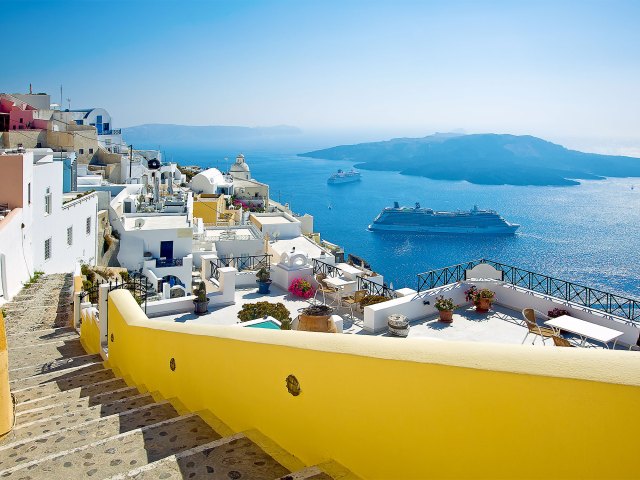
Fira, the capital of the Greek island of Santorini, is home to around 15,000 residents, but the island hosts over 2 million tourists each year. That’s no surprise; this gorgeous spot boasts some of the most famous and stunning sunsets in the world. And the town isn’t too shabby, either. Clinging to sheer cliffs, the town features whitewashed stucco walls, charming archways, beautiful tiles, azure blue roofs, and a warren of cobbled streets that open up to lush gardens and sweeping ocean views.
But Fira’s Old-World charm and glorious turquoise waters aren’t just beautiful, they’re incredibly unique. The town — actually, the whole island — is a caldera. And it’s the only inhabited one in the world. A caldera is a cauldron-like depression or sinkhole that is formed after a volcano erupts and collapses. The island’s bay, famously half-moon shaped in the center of the caldera, was created during a massive eruption in the Minoan era. This means Santorini and the picturesque town of Fira are located on the brim of a volcano!
Huacachina, Peru
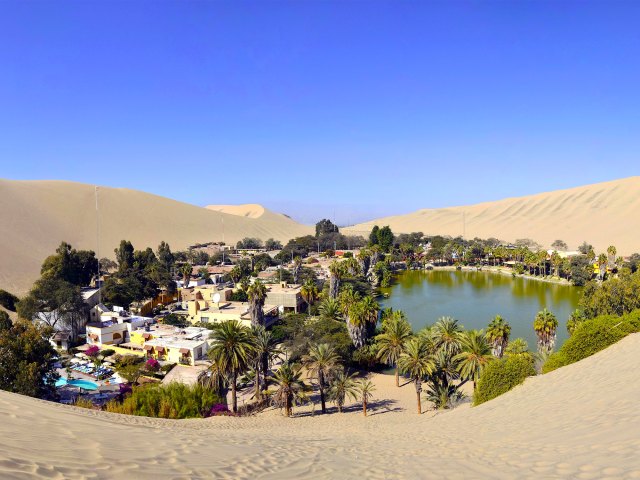
Peru might be well-known for its majestic Andes mountains, but along the coast lies a strip of desert with sweeping, white sand dunes that could double for the Sahara. One of the most interesting ways to check out this region, which is among the driest on Earth, is a trip to Huacachina. Located a few hours south of Lima, and close to the city of Ica, this tiny town encircles a spring-fed lagoon that fosters a lush oasis dotted with palms and rich tropical foliage. The waters of the lagoon are believed to have therapeutic properties, which made this village a popular destination for Peruvian elites in the 1940s. Today, Huacachina is a popular vacation destination, offering adventure sports, lively parties, and winery tours. It’s easy to be enchanted by the Spanish colonial architecture, the main drag’s mermaid statue, and the dramatic way the town is illuminated at night.
Less than 100 people call Huacachina home, and most work in tourism at inns, hostels, and restaurants. Taking a paddleboat across the lagoon is a popular pastime, along with desert hikes, sandboarding, and dune buggy rides. Those who don’t work in tourism still work in sand — exporting it is the region’s other main industry.
Constantine, Algeria
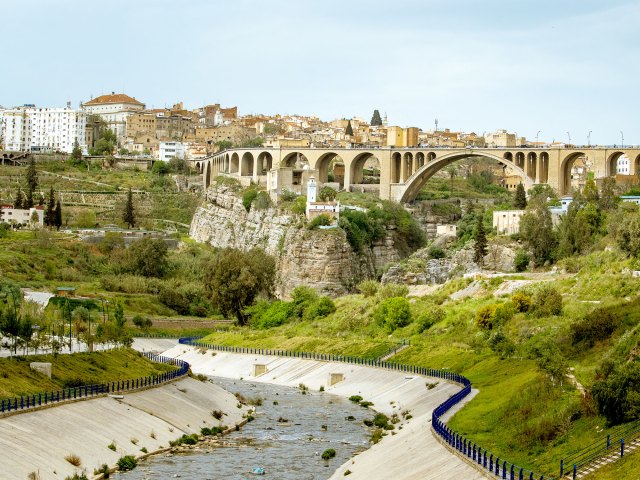
The city of Constantine, named in honor of Emperor Constantine the Great, is famous for its eight picturesque bridges (and its “City of Bridges” moniker). Why so many bridges? The city is split by the Rhommel Gorge — over a mile in length with an average depth of 400 feet. The bridges connect the crags and cliffs the city is built on — adding architectural wonder to this rugged mountain landscape. Gantaret El Hibal Bridge (also known as the Sidi M’Cid Bridge) is the city’s most famous bridge. Completed in 1912, it was the highest bridge in the world until 1929.
Constantine dates back to 600 BCE, when under the Berbers, it was called Citra. The city was also a Roman stronghold, and still offers visitors the chance to experience ancient Roman ruins both within city limits and two hours away at Djemila, an official UNESCO World Heritage Site. In addition, Constantine is also home to Ottoman palaces, ornate French colonial hotels, a huge mosque, and a series of epic monuments to marvel at.
Castelluccio, Italy
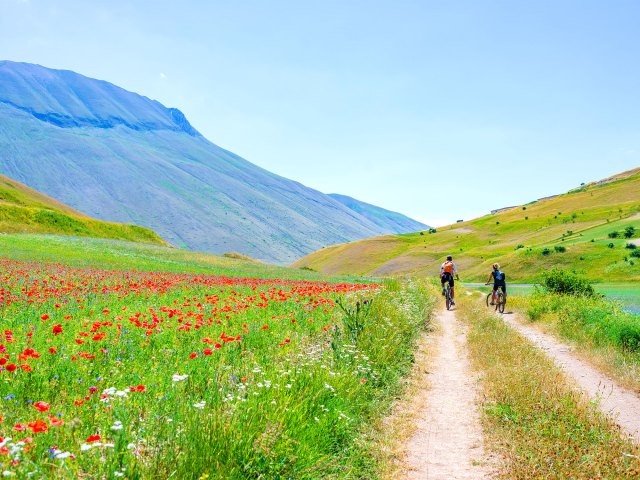
At roughly 4,700 feet above sea level, the Italian village of Castelluccio is one of the highest-elevation towns in the Apennines Mountains. Getting to town is quite the journey — the hairpin turns along the narrow road to town, running through Monti Sibillini National Park, aren’t for the faint of heart. But visitors are rewarded with breathtaking panoramic views of the Umbrian countryside — especially in the spring and summer when the region’s meadows and lentil fields erupt with colorful poppy, daisy, orchid, and cornflower blossoms.
The village is precariously located in front of the park’s highest peak, Monte Vettore. It dates to the 13th century, but the area has been settled since the ancient Roman era — thanks to its incredible views and fertile lands. Today, visitors flock to Castelluccio for skiing, horseback riding, hiking, hang-gliding, and paragliding, but the town is home to few permanent residents. Only about a hundred people actually live in Castelluccio since a series of earthquakes struck the area in 2016.
More from our network
Daily Passport is part of Optimism, which publishes content that uplifts, informs, and inspires.























